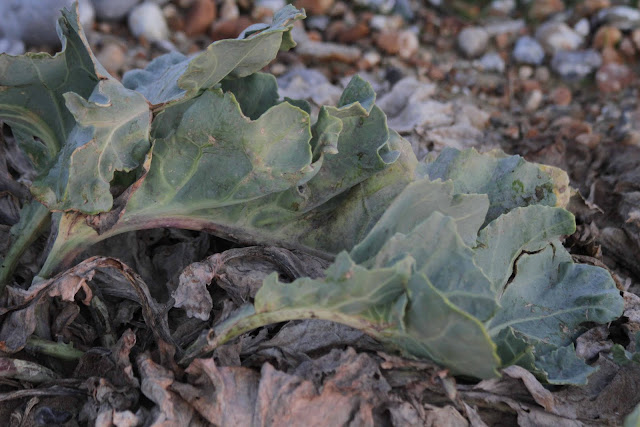After spending the bulk of the afternoon strimming the boat spaces at the sailing club, I headed off South into East Sussex to Rye Harbour to have a look at the new Nature Reserve facilities there.
I was able to take Monty out on the shingle paths and he had an absolutely great time rushing about. As the paths have been separated from the bird areas by pig netting, the dogs get their exercise while the birds are protected from grievous trespass by them!
On the other side of the River Rother the visitors were walking along the beach by the sand dunes
This side of the river the bank is almost entirely shingle, always such a beautiful mix of colours
The shingle is covered by last season's Sea Kale,
The area has always had to be guarded against invasion, while its various shorelines have extended gradually out to see. The latest time of trial was the Second World War, and the pill-boxes remain scattered about the nature reserve to the present day.
Eventually Monty and I reached the far hides, and I chose the one with the setting sun behind it, to try to get a few last minute photos. The islands in the scrape were crowded with lapwings, Vanellus vanellus. Later I saw one Redshank, Tringa and a lovely pair of Little Grebes, Podiceps, just under the windows of the hide itself.
Behind them were about a hundred plovers, which I though might have been Golden Plovers, but couldn't be sure. Further back were hundreds of Herring Gulls and Lesser Black Backed Gulls.
Spotted later on in the middle of the photo were a single Shelduck and one Oystercatcher. Can you spot them?
Here is the sunset over the Lower Greensand cliffs by Hastings. What a great hour down by the sea. I really can't understand any more why people need to travel further than the boundaries of the UK - I won't have enough time to see everything that needs to be seen in Kent, let alone the rest of England, let alone the rest of Britain!
I was able to take Monty out on the shingle paths and he had an absolutely great time rushing about. As the paths have been separated from the bird areas by pig netting, the dogs get their exercise while the birds are protected from grievous trespass by them!
On the other side of the River Rother the visitors were walking along the beach by the sand dunes
Here is the sunset over the Lower Greensand cliffs by Hastings. What a great hour down by the sea. I really can't understand any more why people need to travel further than the boundaries of the UK - I won't have enough time to see everything that needs to be seen in Kent, let alone the rest of England, let alone the rest of Britain!

































